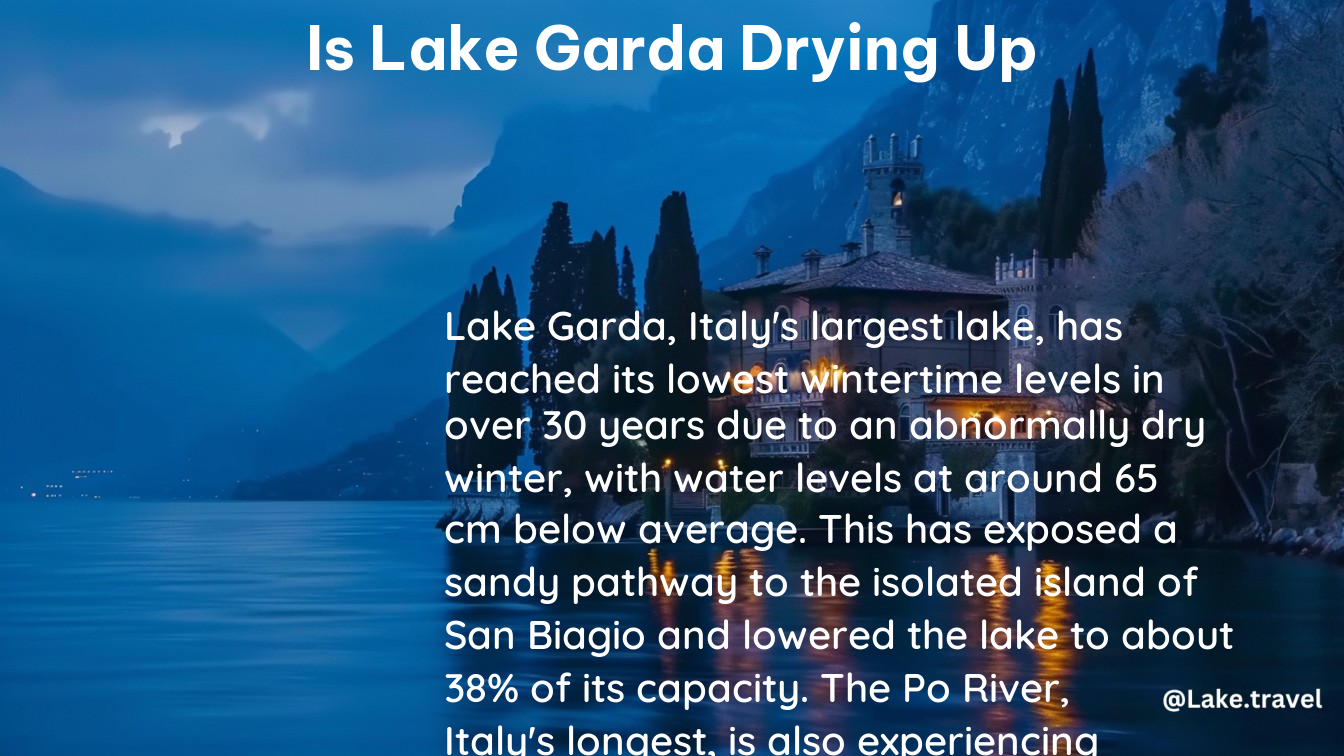The Alarming Decline of Lake Garda’s Water Levels
Yes, Lake Garda, one of the largest and most popular lakes in Italy, is experiencing a concerning decline in its water levels due to a severe drought affecting the northern regions of the country.
The Drought’s Impact on Lake Garda

The lack of snowfall and rainfall this winter, combined with unusually warm temperatures, has led to a significant drop in the lake’s water levels. As of April 2023, the waterline of Lake Garda is around 65 cm below the average for this time of year, reaching its lowest wintertime levels in over 30 years.
Exposed Pathways and Accessibility Challenges
The low water levels have exposed a sandy pathway to the isolated island of San Biagio, which was previously only accessible by boat. This unusual phenomenon has attracted tourists to the area, but it also poses challenges for the local tourism industry if the lake’s water levels do not rise in the spring, potentially requiring the dredging of harbors to facilitate access for tourist boats.
Broader Impact on the Region
The drought’s impact extends beyond Lake Garda, affecting other lakes and rivers in the region, including the River Po, Lake Maggiore, and Lake Como. This widespread water scarcity has raised concerns about diminished crop harvests, threats to drinking water supplies, and the potential impact on hydropower generation.
Monitoring and Response Efforts
In response to the crisis, the Italian government has set up a control room to monitor water capacity across the country. Climate scientists have also warned that such extreme weather events are likely to become more frequent in the coming years, underscoring the need for long-term solutions to address the challenges posed by climate change.
Potential Solutions and Adaptations
To mitigate the impact of the drought, various strategies may be considered, such as:
- Implementing water conservation measures and promoting efficient water usage among residents and businesses.
- Investing in infrastructure upgrades, such as water storage facilities and distribution networks, to improve water management and resilience.
- Exploring alternative water sources, including groundwater and desalination, to supplement the dwindling surface water supplies.
- Diversifying agricultural practices and crops to adapt to the changing climate and water availability.
- Promoting sustainable tourism practices that minimize the strain on water resources.
The Future of Lake Garda
The ongoing drought and its impact on Lake Garda raise concerns about the long-term sustainability of the region’s water resources. As climate change continues to exacerbate extreme weather events, it is crucial for policymakers, local authorities, and the community to work together to develop comprehensive strategies to address the challenges and ensure the future resilience of Lake Garda and the surrounding areas.
Conclusion
While the low water levels of Lake Garda have attracted some tourists, the long-term implications of the drought are far-reaching and concerning. The situation serves as a stark reminder of the urgent need to address the impacts of climate change and implement sustainable water management practices to safeguard the future of this iconic Italian landmark and the communities that depend on it.
